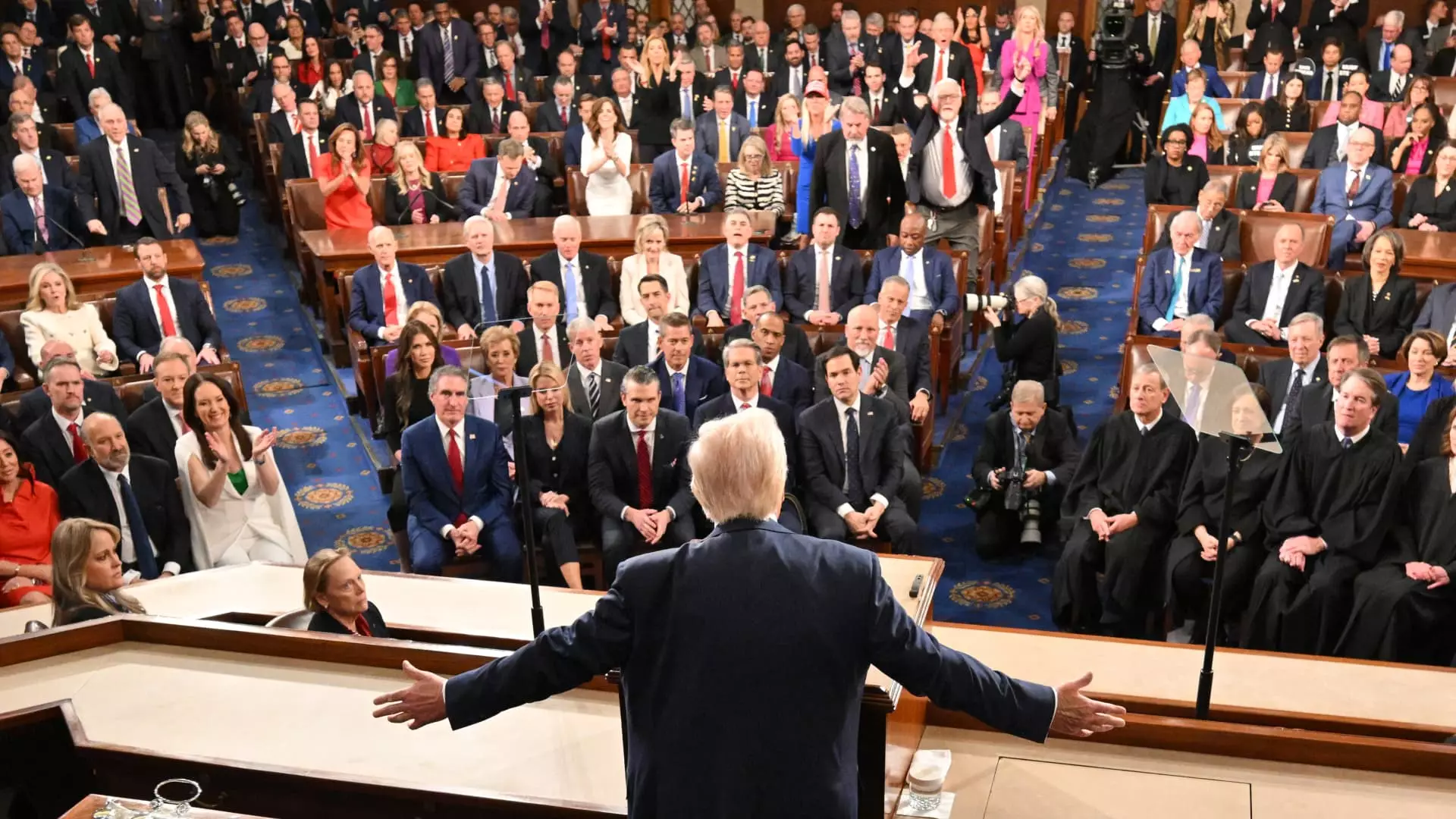When President Donald Trump heralded tariffs as a job-creation mechanism, he unwittingly tapped into a deeply rooted fallacy in economic policy. His proclamation that tariffs would create “jobs like we have never seen before” is enticing on the surface, yet economists examining the true ramifications of these policies dispute this optimistic assertion. Instead of fostering growth, these protective measures often act as barriers, hindering market efficiency and, paradoxically, resulting in net job losses across broader sectors of the economy. Mark Zandi, chief economist at Moody’s, encapsulated this sentiment succinctly by labeling tariffs as a “lose-lose” situation. One must question whether trade policy based on romanticized notions of protectionism is truly in the best interest of American workers.
The Case Against Tariffs
Trump’s administration has positioned tariffs as a shield for American industry, imposing sweeping duties on imports from key trading partners such as China, Mexico, and Canada. While there are fleeting win-lose dynamics apparent in certain industries—specifically the steel sector, which saw a modest uptick in domestic production due to tariffs—the broader implications are much less rosy. For every steel job purported to be saved, myriad other industries—such as automotive manufacturing, agriculture, and consumer goods—suffer crippling increases in production costs. Lydia Cox, an expert on international trade, points out that tariffs disproportionately affect steel-intensive industries by raising input costs, leading to a cascade of job losses in sectors that hinge on affordable raw materials.
The harsh truth is that these tariff policies mirror the catastrophic Smoot-Hawley Tariff of 1930, which exacerbated economic turmoil during the Great Depression. As history has taught us, protective measures can isolate domestic industries in a bubble, rendering them less competitive globally. Cox emphasizes that tariffs create collateral damage, fueling retaliatory tariffs from other nations and further choking the avenues for U.S. exports. In essence, tariffs may protect small segments of the economy but at the expense of overall employment and growth.
Trade War Fallout
The repercussions of ongoing trade wars extend beyond immediate job losses. A staggering $290 billion of U.S. imports were subject to tariffs averaging 24% by August 2019. This economic tactic does not merely affect the cost structures of individual companies; it reverberates through supply chains, leading to job losses along the entire production continuum. In some cases, retaliatory measures from other countries have led to U.S. agricultural products facing tariffs exceeding 15%, directly threatening the livelihoods of American farmers who constitute a significant portion of exports to nations like China.
The disconnect between political rhetoric and economic reality becomes glaringly evident in light of the actual data. Economists have noted that, while targeted tariffs may yield temporary relief for struggling sectors, they simultaneously carry the risk of eroding job security for far larger segments of the workforce. A study indicated that prior tariffs under George W. Bush resulted in an estimated 168,000 fewer jobs annually across steel-using industries. The continuation of such policies under subsequent administrations raises critical questions about the kind of economic environment we are willing to endorse.
The Future of American Manufacturing
Observations from the past several years indicate that the promise of revitalizing American manufacturing via tariffs is a mirage. A Federal Reserve report revealed that Trump’s tariffs, instead of rejuvenating manufacturing jobs, led to a net decline of 2.7% in total manufacturing employment. This data illuminates a harsh reality: despite short-lived gains in some sectors protected by tariffs, the long-term trajectory is a net negative for American labor.
As technological innovations continue to redefine the employment landscape, the push for protectionist policies seems increasingly outdated. The reduction of manufacturing jobs relative to the rising capabilities of technology underscores the futility of attempting to cling to a bygone era through tariffs. What the U.S. economy truly needs is not a retreat from globalization, but strategies focused on equipping workers with skills relevant to the modern economy. Protectionism will not foster innovation or prepare American workers for the jobs of tomorrow.
In the end, it is clear that tariffs, while politically appealing in theory, ultimately act as a double-edged sword—promising protection but delivering profound collateral damage. The challenge ahead lies in developing a policy paradigm that prioritizes growth, competition, and innovation, rather than clinging to the protective mechanisms of the past.

